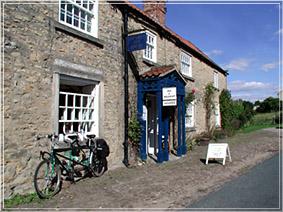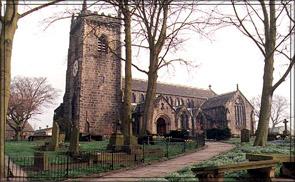NOVEMBER 2001
We are told that it has been the warmest October since records began in 1659. One evening as I went to the Princess at ten in the evening, our neighbours were still sitting in the garden. Certainly our weather becomes warmer and wetter. The papers say that on present trends there will soon be vineyards in Yorkshire. Chateau Skipton, Coverdale Villages, Cleckheaton Premier Cru. It might even in six hundred years time be warm enough to go into the sea at Scarborough. But then again, probably not.
Autumn is here now. The maples opposite Kirkstall Abbey are putting on their usual stunning annual display. I shall spend the next couple of weeks repeatedly asking the boys to bag the leaves in the garden before eventually doing it myself. It is a ritual we go through every year to mark the passage of November. It shows that I still believe that hope can triumph over experience.
In Halifax it was always Plot Night. We went ‘plotting’ (gathering wood and household undesirables) for ‘plot’ (no definite article) to put on ‘the plot’ (the bonfire). Twenty years ago I thought that Bonfire Night was in decline but now I’m not sure that is so. It was widely celebrated in these parts. As it this year fell on a Monday, it seemed to last four nights beginning on the previous Friday. Perhaps though it isn’t quite the community based event it was a generation ago when the whole street gathered and people brought along treacle toffee, parkin, baked potatoes, sausages and sandwiches, ginger beer and dandelion and burdock. As children we found it so exciting to be out late at night, or so it seemed, in the cold with fireworks to ‘let off’. Ils sont passes, ces beaux jours.
Guy Fawkes was born near Stonegate in York in 1570. His father was a lawyer at the Minster offices and as a child he attended the Protestant church of St Michael-le-Belfry. But after his father died, Guy’s mother married a Catholic. Guy converted and with the zeal and conviction of a convert came to believe that the Protestant King James I and his government must be overthrown. He was the explosives expert and the plotters, or terrorists as we would call them today, planned to blow up the House of Lords, and with it the King and the Establishment on 5th November 1605. The gunpowder was prepared in the cellars for what would, they hoped, change the course of English history. As we know, the conspiracy was foiled and its failure has been celebrated ever since. Guy and his fellow conspirators, many of whom were Yorkshiremen, were arrested, tortured and hanged. Nowadays, of course, there would be a trial lasting months or years and costing millions and it would finally be abandoned on the basis that Guy had had a traumatised childhood, was temporarily insane and should be treated as a political prisoner.
Coxwold near York
On a dark stormy day last month we went with friends to Haworth. It was the first time since my childhood that I’d visited the Brontë Parsonage. It’s worth a trip to be reminded how spartan houses were in those days. You see Patrick Brontës study and the kitchen where Emily studied German by candlelight whilst she was baking. We had lunch in the Black Bull where Branwell spent too much time and we ‘did’ the antique/junk shops (delete according to taste). The steep cobbled main street is now closed to traffic (other than for access); when I was younger (so much younger than today), one could drive up it and park at the top. Now, of course, it’s yellow lines and council notices threatening death to anyone who parks illegally. As I say elsewhere on this site, if you want to see an unspoilt Pennine village, go to Heptonstall or Luddenden, but don’t tell too many people or they’ll be full of tourists, traffic wardens, yellow lines and marmalade too.
Maria Branwell
Patrick Brontë
Patrick Bronté married Maria Branwell at Guiseley Church on 29th December 1812. No doubt the family had many happy times but the stark facts are of almost unrelieved tragedy. Maria was born in 1814, Elizabeth 1815, Charlotte 1816, Branwell 1817, Emily 1818 and Anne 1820 (January). Their mother died the following year.
Maria died aged 11, Elizabeth aged 10. Anne was 29 when she died of tuberculosis. Emily died at 30 and Branwell at 31, again both probably of TB. Charlotte died at 39 in the early stages of her first pregnancy. Patrick lived until he was 84 and died in 1861.
Guiseley St Oswold's Church
This year Remembrance Sunday and Armistice Day coincided. We went to the service at my elder son’s School. 128 Old Boys of the School, and God knows they were mostly little more than boys, lost their lives in the First World War. 111 died in the Second World War. Their names are printed every year in the Order of Service and are displayed permanently on the Roll of Honour at the School, together with two other names, one of whom died on active service in Egypt in 1951, the other was a soldier murdered in Northern Ireland in 1974. Lest we forget. We also remembered this year the victims of the atrocities of 11th September. That date, like 11th November, will now always be associated with a particular event.
I bet many people reading this diary think that very little of note, very little exciting, happens in this part of Yorkshire. How wrong you are. Just let me give you a selection of headlines from last week’s Wharfedale and Airedale Observer (where would we be without it?) so you will get just a flavour of what goes on here. ‘Farmers urged to follow sheep dipping guidance’. ‘Councillor calls for sprinkler’. ‘Talk offers vegetable tips’. ‘Horsforth ladies retain their title’. (Contain your excitement; it’s the cross country team).




